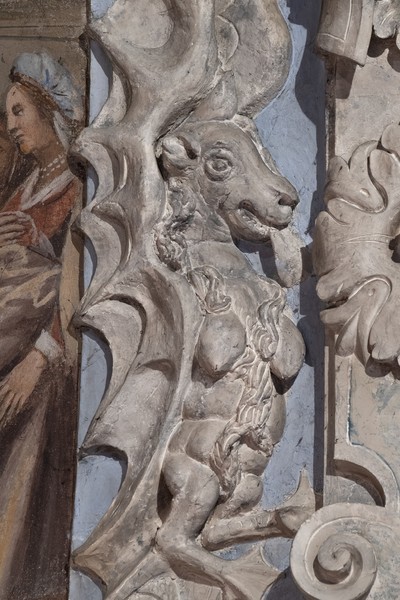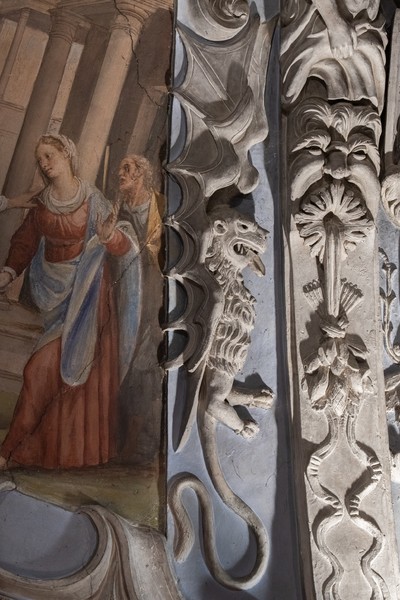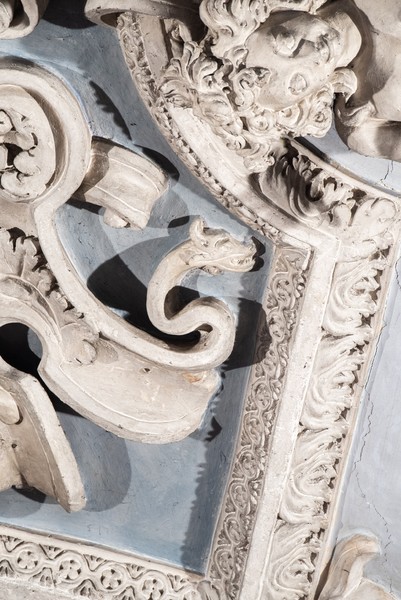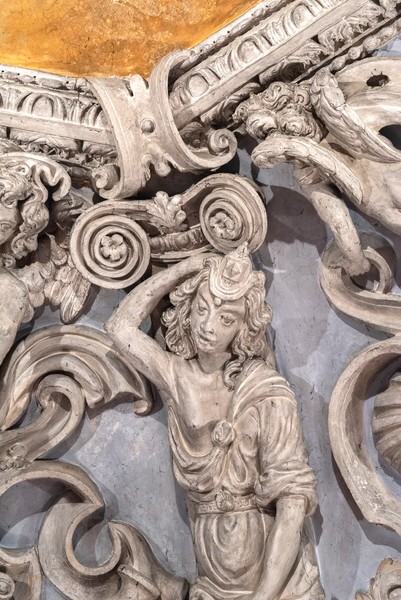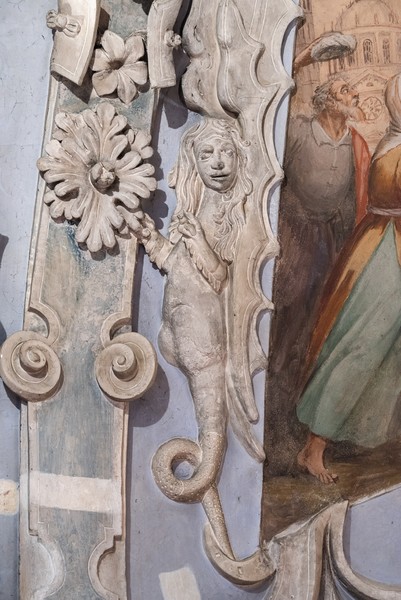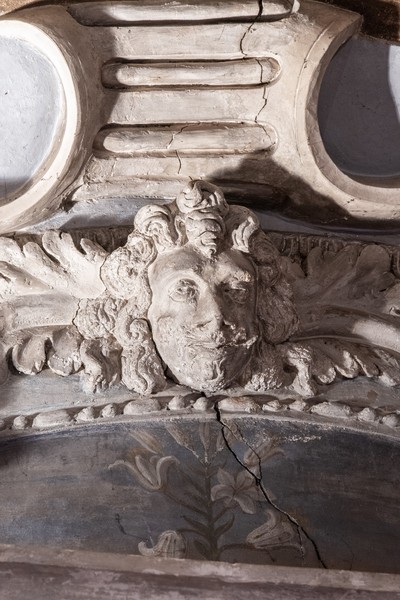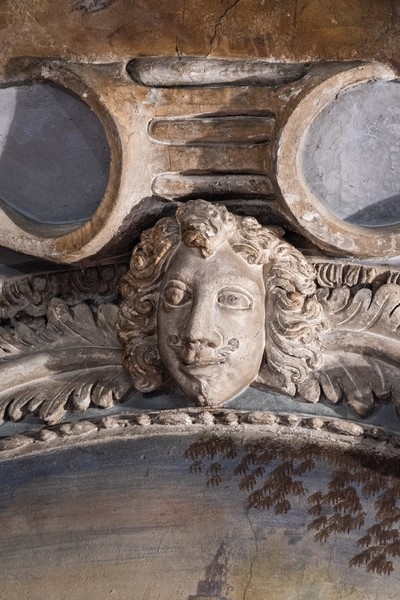Choir
The stuccos of Comano are unique, above all for the great concentration of grotesque figures, with bizarre and monstrous effects increased through the intense superimposition of continuous forms: snake-bitten caryatids, lions with bat wings, dragons, reptile tails, winged sirens, lion paws, masks, shells and twisted ribbons (Fig. 1, 2, 3, 4, 5, 6, 7). This is a decorative repertoire of mannerist taste, which enriches the surfaces without ever entering into systemic relation with the architecture. The relief is rather restrained and none of the figures stand out above the others, as if the decorative elements are without hierarchy, but rather participate together in embellishing the walls. In preparing this profusion of forms, the use of moulds was limited to the modular frames (Fig. 8, 9).
With the exception of a few elements, such as the dove symbolising the Holy Spirit or the angelic heads and figures on cornices and cartouches, the decoration is played out in traditional concatenations that are entirely profane, caustically combined by playing with symmetries, varying the elements or showing some of them, such as shells and cherubs, alternately on the recto and verso. In the same spirit, the framing of the frescos of the Adoration of the Child and the Adoration of the Magi does not end at the bottom with heads of putti, but with two faces that have all the air of being portraits: perhaps of the stucco-workers themselves (Fig. 10, 11)? The decorations are executed without pronounced projection and the figurative elements have contained volumes. Unfortunately, the modelling of the rich ornamental decorations, as well as the details of the drapery and anatomical features of the figures, are poorly discernible, clogged by thick accumulations of lime wash.











